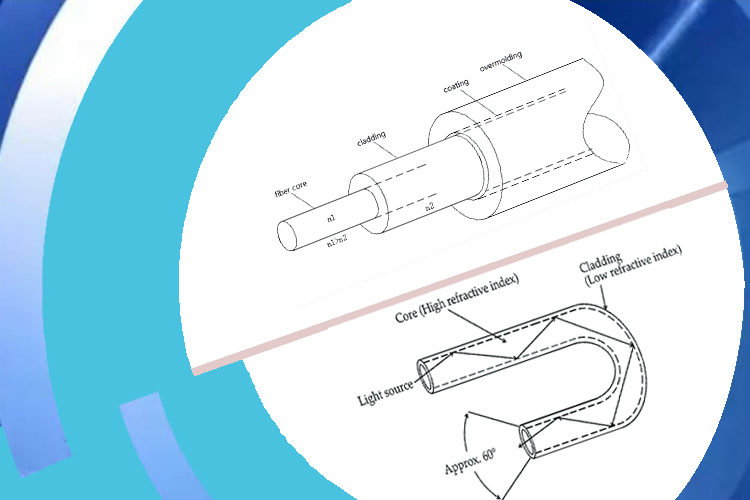By goodvin | 01 June 2023 | 0 Comments
Introduction to Fiber Optic
Introduction to Fiber Optic
This article will cover the following topics related to fiber optic communication systems:
1.What is fiber optic ?
2.The history and development of fiber optic technology.
3.The importance of fiber optic communication systems
By the end of this article, you will have a better understanding of what fiber optic technology is, its significance in modern communication networks, and how it will shape the future of emerging technologies.

1.What is Fiber Optic?
Fiber optic refers to the technology and the medium that uses light pulses to transmit data over long distances. In fiber optic communications, light travels through the core of thin fibers of transparent material, like glass or plastic. The light forms an electromagnetic carrier wave that is modulated to carry information.
Fiber optic communication systems offer many advantages over traditional copper cable communication systems. Some of the key benefits of fiber optic technology are:
•Higher bandwidth: Fiber optic cables can carry more data than copper cables. Fiber optic technology supports bandwidths in the terabits per second.
•Less signal attenuation: Optical fibers transmit light over longer distances with less weakening of the signal. This allows for long-haul transmissions with minimal signal amplification.
•Less prone to interference: Fiber optic cables are less susceptible to electromagnetic interference and crosstalk from external sources.
•Compact and lightweight: Fiber optic cables take up much less space and are lighter than copper cables carrying the same amount of data.
2.History and Development of Fiber Optic Technology
The idea of using light for communication dates back to 1880s. However, practical optical communication systems became possible in the 1960s, with the invention of the laser and the development of low-loss optical fibers. Corning Glass Works created the first commercial single-mode optical fiber in 1970. In the mid-1970s, significant progress was made in developing fiber optic links with loss of 20 decibels per kilometer. This allowed fiber optic communication over several kilometers.
In 1977, General Telephone pioneered the first commercial fiber optic telephone system. In the 1980s, fiber optic systems started supporting SONET networks and became widely adopted for backbone infrastructure. Today, fiber optic technology forms the foundation of all advanced broadband communication systems and high-speed data networks.
3.Importance of Fiber Optical Communication Systems
Fiber optic communication systems are crucial for modern broadband communication networks and infrastructures. Some of the major benefits of fiber optic technology are:
•High bandwidth backbone networks: Fiber optic technology enables high-speed long distance data and voice networks. All major telecommunication carriers and broadband service providers use fiber optic cable in their backbone networks.
•High-speed data connectivity: Fiber optic technology supports connectivity speeds from 10 Mbps to 10 Gbps to businesses and homes. This allows for fast and reliable internet connectivity and other data services.
•Advancing 5G wireless networks: 5G wireless networks will depend on high-capacity fiber optic cable connections between cell sites and data centers. This enables 5G features like ultra-low latency and massive device connectivity.
•Enabling emerging technologies: Fast and efficient fiber optic networks will enable emerging technologies like autonomous vehicles, virtual reality, connected healthcare, smart cities, and more.
•Cost effectiveness: Although fiber optic installation requires significant initial investments, fiber optic networks are cost effective in the long run compared to copper cable systems. Maintenance costs are also lower.
•Reliability: Fiber optic communication systems are very reliable with close to error-free transmission. Optical fibers are also resistant to electromagnetic interference and radio frequency interference.
•Scalability: Fiber optic technology can easily scale to higher speeds and bandwidths through equipment upgrades. Fiber optic cable installations do not need upgrades frequently. This makes fiber optic future-proof.
In summary, fiber optic communication technology underlies all advanced communication networks and will support numerous innovations and emerging technologies in the coming decades. It has transformed how we live, work, and interact with the world.
Leave a Reply
Your email address will not be published.Required fields are marked. *
POPULAR BLOG
- The Future of Fiber Optic Access Networks: An Expert Perspective
- Market Analysis of Fiber Optic Testing Equipment: Key Trends and Insights
- Will SDM Technology Become the Only Way for High-Capacity Optical Transmission?
- Fiber Optic Network Development Strategy and Technical Roadmap
- Impact of Technical Innovation of Optical WDM on the Future of Optical Communication